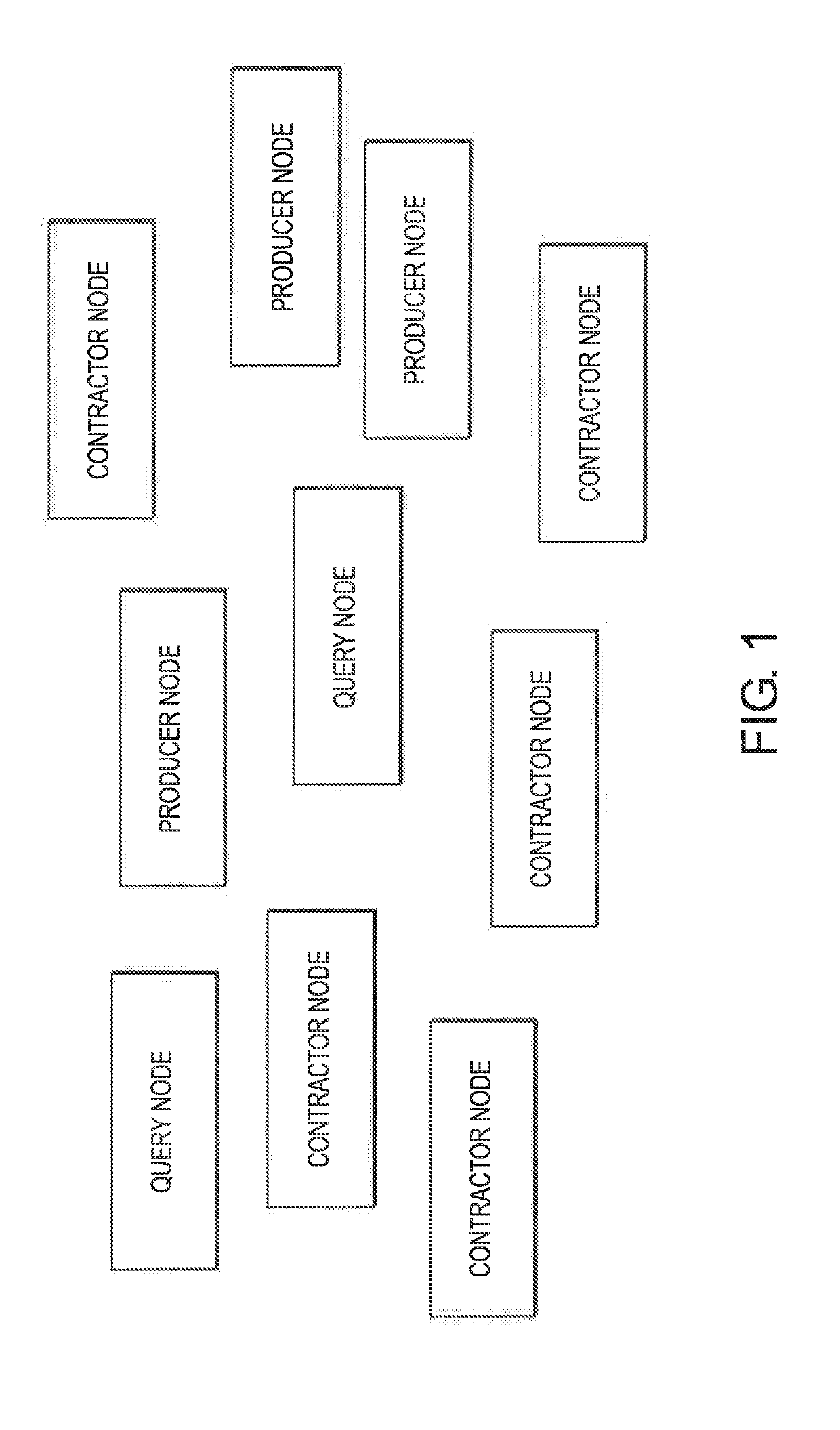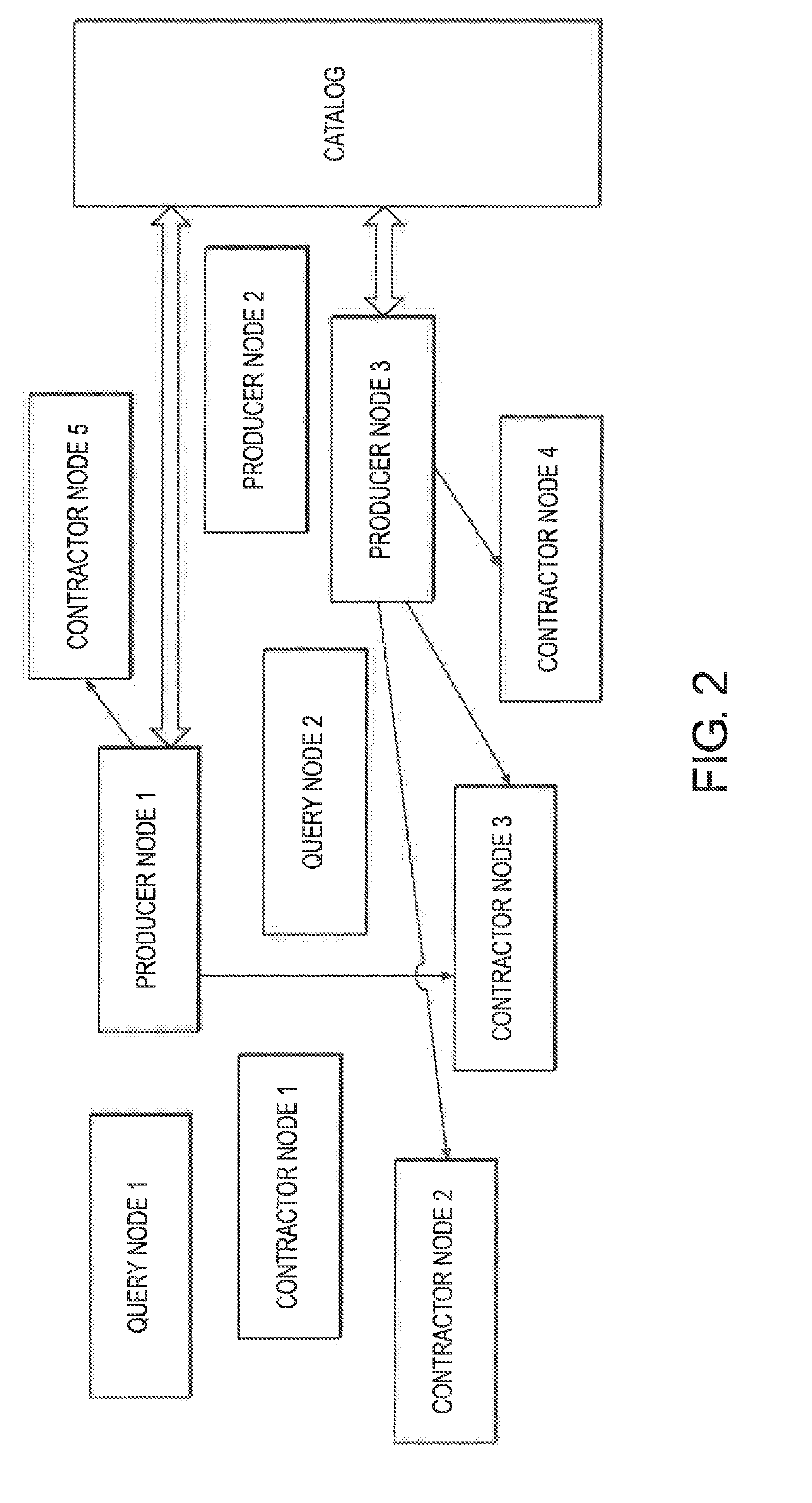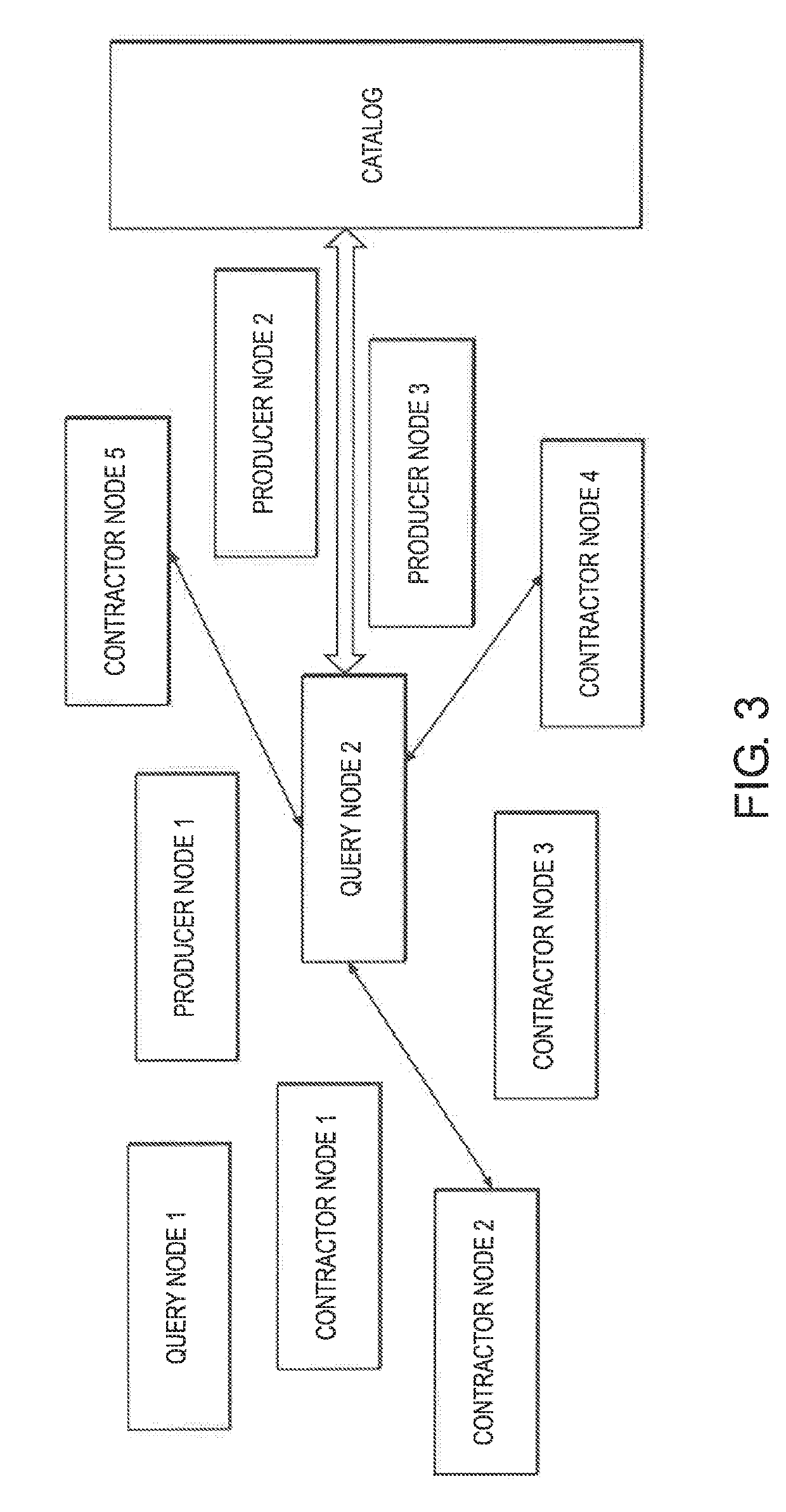System and apparatus to manage data using a peer-to-peer network and the blockchain
a technology of peer-to-peer network and data management, applied in the direction of digital transmission, securing communication, transmission, etc., can solve the problems of preventing a simple integration to the existing system, affecting the efficiency of data management, so as to achieve efficient location of relevant data and avoid cost. , the effect of low cos
- Summary
- Abstract
- Description
- Claims
- Application Information
AI Technical Summary
Benefits of technology
Problems solved by technology
Method used
Image
Examples
Embodiment Construction
[0064]Described herein is the storage and query of large volumes of data; in particular to the storage and query of log data. More specifically, embodiments herein consider log data as time series data which is stored on a network of machines next to or remote from where the data was generated. A metadata layer provides context to the data and queries are satisfied in a unified and cost-efficient way by creating an ad hoc, peer to peer (p2p) database to each query.
[0065]Embodiments describe a protocol and a software infrastructure that creates a distributed and decentralized network. Data being generated is distributed by members of the network to other members that store and process the data. The members that distribute the data are called publishers or producers, the members that store the data are called contractors or operators and the servers they used are called data nodes. Contractors are incentivized to join the network for rewards and publishers are incentivized to join the...
PUM
 Login to View More
Login to View More Abstract
Description
Claims
Application Information
 Login to View More
Login to View More - R&D
- Intellectual Property
- Life Sciences
- Materials
- Tech Scout
- Unparalleled Data Quality
- Higher Quality Content
- 60% Fewer Hallucinations
Browse by: Latest US Patents, China's latest patents, Technical Efficacy Thesaurus, Application Domain, Technology Topic, Popular Technical Reports.
© 2025 PatSnap. All rights reserved.Legal|Privacy policy|Modern Slavery Act Transparency Statement|Sitemap|About US| Contact US: help@patsnap.com



